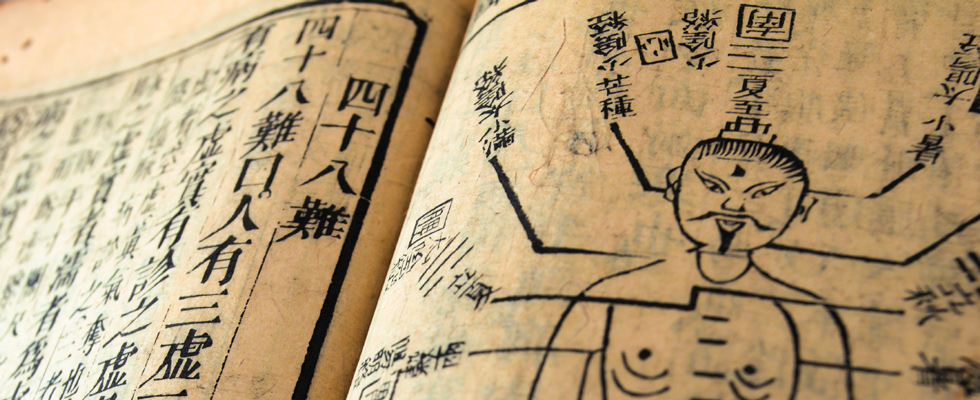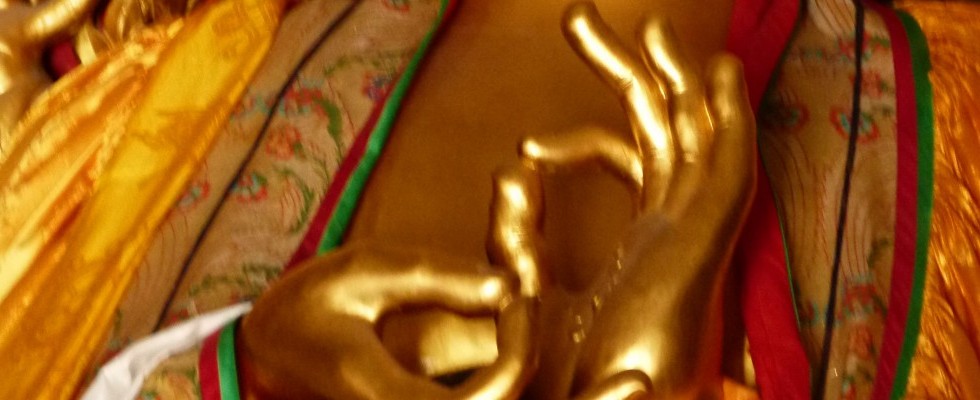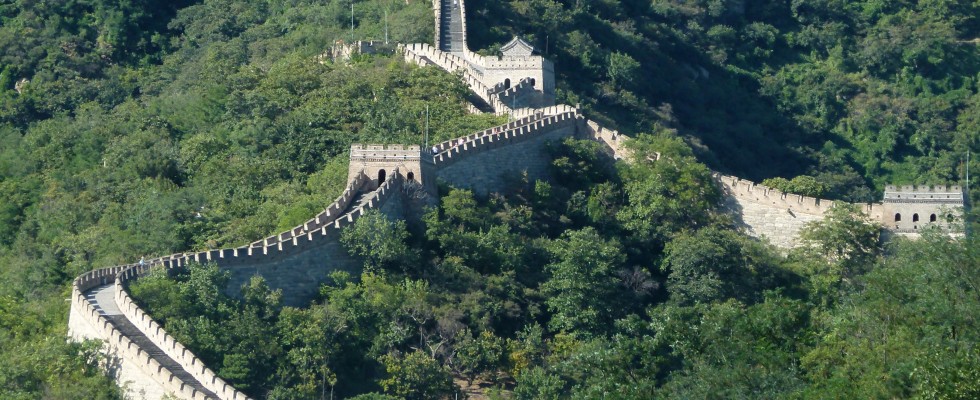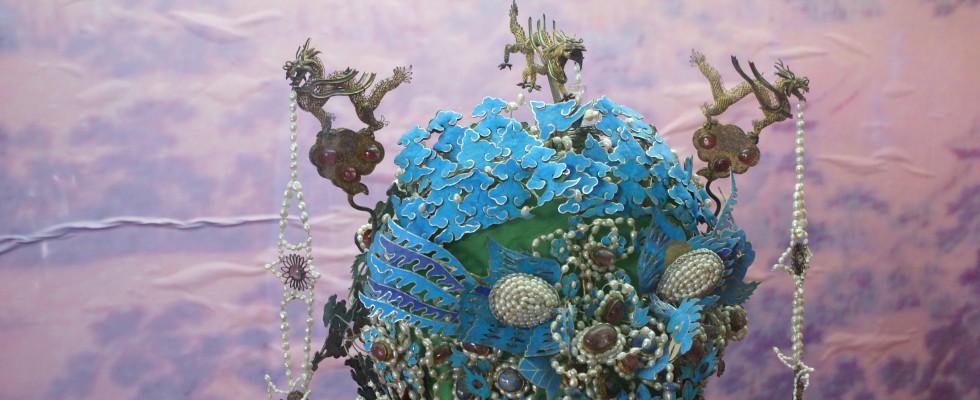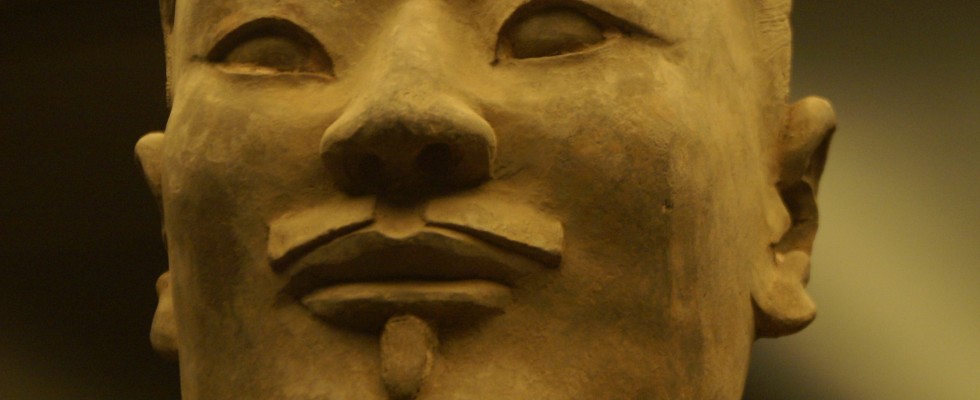Klassieke Acupunctuur
Klassieke Acupunctuur CCM is duidelijk anders dan Traditionele Acupunctuur TCM.
De Klassiek Acupuncturist houdt onder andere rekening met de Universele Energie (Qi), de Persoonlijke Qi en de Dagelijkse Qi. Op die manier is oorzaak en gevolg makkelijker te begrijpen. Tevens is het bepalen van het plaatsen van (het gering aantal) naalden specifieker toe te passen. Dit concept is bijna 5000 jaar oud.
De Universele qi heeft z’n grondslag in de Chinese Kalender, waarin tijd en ruimte gekoppeld zijn aan de organen en orgaansystemen in de mens. Wanneer ook de Dagelijkse qi in het goede aspect wordt meegenomen in de behandeling zal een patiënt beter en sneller herstellen.
Het concept van Yin en Yang is een aspect wat de behandeling van een Klassiek Acupuncturist telkens weer bepaalt, bijvoorbeeld:
- Bij een vrouw (zij is Yin) plaatsen we de naalden aan de rechter zijde (dit is de Yang).
- Bestaan de klachten aan de bovenzijde van het lichaam, dan plaatsen we bij voorkeur de naalden aan de onderzijde
- Bestaan de klachten aan de linkerzijde van het lichaam, dan plaatsen we bij voorkeur de naalden aan de rechterzijde
- Komt iemand in de winter, dan nemen we bij voorkeur ‘zomer’-punten
- Komt iemand rond het middaguur, dan nemen we bij voorkeur punten die horen bij middernacht
- heeft iemand klachten van de Lever-energie, dan nemen we bij voorkeur geen Lever punten
- etc.
Maar… altijd wordt rekening gehouden met de symptomen van de klacht, de dagelijkse energie, en vooral met de persoonlijke energie van de patiënt!
De Persoonlijke Energie is de Qi die op het moment van geboorte in kwaliteit als wel kwantiteit op de mens van toepassing is.
De Chinese Kalender is, zoals gezegd, de basis voor de CCM, waarbij de ‘Stammen en Takken’ de aspecten tijd en ruimte vertegenwoordigen. Deze metaforen, die ook de ‘Four Pillars’ worden genoemd, zijn de fundamenten waarmee de Klassiek Acupuncturist werkt.
Zo kunnen twee mensen met dezelfde klachten toch geheel anders behandeld worden. En zo kan een mens wanneer hij op een ander tijdstip van de dag komt op geheel andere punten naalden geplaatst krijgen. Er is een constante verandering van Qi door het jaar, de maand, de dag en het uur waar de Acupuncturist mee bezig is, en dan alles gerelateerd aan de klachten van de persoon!
Belangrijk is dat daarnaast de Westerse Pathologie in Qi wordt vertaald. Elk van de 12 energiesystemen heeft invloed op bepaalde bij dat systeem behorende cellen, een orgaan of een fysiologische functie, hetgeen allemaal mede bepalend is voor het vaststellen van het behandelplan en het plaatsen van de naalden. Mede daarom is het zinnig voor de acupuncturist om te weten welke diagnose de Westerse arts of specialist heeft gesteld en welke allopathische medicatie en voedingssupplementen er eventueel gegeven wordt. Alles heeft namelijk invloed op de flow, voeding en controle van desbetreffende energie (Qi). Het geheel komt tesamen in de filosofie van de Stammen & Takken die een klassiek acupuncturist gebruikt.
Zo kan door een persoonlijk en op maat gesneden benadering de oorzaak van de klachten bepaald en behandeld worden!!
Bovenstaande uiteenzetting komt deels uit een Engels-talig artikel hieronder van Peter van Kervel. Voor meer uitgebreide en specifieke informatie beveel ik dit artikel van harte aan.
CCM versus TCM
Introduction
This paragraph will give an overview of the differences between TCM and CCM, based on information from an article by Heiner Fruehauf, as well as my personal experiences as a practitioner, and aboveall as a lecturer. The name of the article of Heiner Fruehauf is: “Chinese Medicine in Crisis: Science,Politics, and the Making of TCM” – 1999 (Heiner Fruehauf gave his permission to use quotes of his article, found in Italic). This introduction will give an overview of a few differences between TCMand CCM. To be followed by an historical overview, ending with the connection between CCM andwestern medicine.
There are quite a few differences between the prevalent TCM (Traditional Chinese Medicine), andthe less known wŭ yùn liù qì acupuncture, known as CCM (Classical Chinese Medicine). One of the maindifferences is found in the way of acupuncture treatments:
| TCM | CCM |
| Based on herbal medicine doctrines | Based on ancient philosophicalprinciples |
| Formulas of acupuncture points,punctured frequently | Few needles punctured, as being partof a philosophical strategy |
| Points punctured in opposition ofharmed area or qì | |
| Choice of points based on syndromesor patterns | Tailor made choice of points, based onindividual condition of the person |
| Bilateral puncturing of acupuncturepoints | Puncturing of points based on law ofyīn and yáng, woman yáng side, man yīn
side |
| Removal of needles ad random | Last removed needle emphasises theaim of action |
| Western medicine is clarified andincorporated into TCM doctrines | CCM uses it’s philosophical conceptsto clarify western medicine
(physiology and pathology) |
Besides these differences in treatment, the influence from western medicine was incorporated from 18th century. Chinese (herbal) medicine concepts started to explain western medicines. Since this introduction, some of the paraphernalia of modern western medicine were integrated into this traditional Chinese system. Modern TCM is created in the 1960’s and exported to the west, in a mixed, not ancient form.
According to the teacher Dr. J.D. van Buren, TCM acupuncture is based on herbal medicine doctrines and concepts, such as syndromes. Syndromes are a set of symptoms, given by the patient, which indicate a specific pattern, appropriate for a medicinal herbal prescription and a fixed group ofpoints to be needled. Terms like: liver qì stagnation, large intestine damp heat, large intestine dryness, spleen qì deficiency, spleen yáng deficiency, kidney yáng deficiency, large intestine coldness, . . . and more, were often combined with western medical diagnoses, and treated with a formula of herbs and a set of fixed points for each patient.
CCM training is based on philosophical laws, and tailor-made, individually chosen treatments and choice of acupuncture points, along with a treatment strategy adapted to a specific time.Acupuncture treatments in the morning, afternoon, winter or summer, were not executed with thesame points, but changed, adapting to the specific time.
History | 1700 – Modern Time
In China there was only one medicine, up to the introduction of western medicine, in the 18th century.This caused a separation or division between Chinese medicine and western medicine. Chinese medicinelost its tradition, and was permeated with concepts of western medicine.
“Immediately, however, there developed an early brand of progressive physicians who did not lament this situation, but attempted to integrate some of the paraphernalia of modern medicine into the traditionalsystem. These pioneers are now collectively referred to as the Chinese-Western Integration School (zhong xi huitong pai). Main representatives are Wang Qingren (1768-1831), Tang Zonghai (1851-1908), Zhang Xichun (1860-1933), and Zhang Shouyi (1873-1934). It is important to note that these initial “integrators”,often cited by TCM administrators as early visionaries of their own system of integrated medicine, were not proponents of the hierarchical superiority of Western medicine, but rather tried to embody the traditional ideal of the broadly educated master physician.”
This was one of the first times that western medicine began meeting the orient and created adistinction one from the other, as well as integrating. The level and knowledge of western medicinedeveloped tremendously over the last 50 years. In the above mentioned era, western medicine wasneither well developed nor at a high level. The Chinese physicians tried to incorporate useful ideasand concepts into their traditional medicine, as well to categorize western drugs into energetic terms. The ‘integrators’ tried to incorporate western medicine and its’ concepts into philosophical concepts of acupuncture. This is the first step of ancient acupuncture losing connection with its source. More to be followed.
A jump in time brings us to the beginning of the Republican Revolution, 1911. One of the founders, apolitician, started actions against the dynastic system, running in China for thousands of years.
1911:
“the theories of yin and yang, the five elemental phases, the six atmospheric influences, the zang-fu systems, and the acupuncture channels are all illusions that have no basis in reality” and warns that “old medicine is still conning the people with its charlatan, shamanic, and geomancing ways.”
Those opinions against the dynasties, emperors and shamanic knowledge became worse and passed the legislative session of the Ministry of Public Health. The practical principles used in anacupuncture clinic, are based on philosophical doctrines. They describe the universe, existence of space and time, heaven and earth, and named CCM. These metaphorically presented principles describe the laws of the universe, like the four emanations with its centre. This last principle describes the creation of humans in a pluriform way, based on the number five (four plus its centre).In treatment, all of those laws and principles are applied to a strategy based on those universal principles.
Another important concept in the CCM is the comparison of the macrocosm with the microcosm andis a concept known to any acupuncturist. TCM practitioners proclaim to embrace the above describedprinciples, while their daily life practice in terms of diagnosis and treatment, is much more closelyaligned to choosing points according a set formula. It is possible to be acquainted with all kind of philosophical principles, and yet above all it is being able to apply these in clinical practice. TheChinese calendar is a lunar calendar system, which is part of the wŭ yùn liù qì doctrine, applied inpractise. The calendar on its own, is not so fascinating. It is the connection between cycles of years,months, days and hours, connected with the zàng fŭ, the internal organs. These are so-called the stemand branch of the year, month, day, and hour, known as the four pillars. The knowledge of this systemmakes it possible to treat each patient on an individual way, taking into consideration the available qì on the moment of treatment.
The personal qì of the patient is based on the four pillars. The combination of four aspects of time are connected to a cyclic system of flow of qì. The entering, birth, or being part of a specific phase of the cyclic movements of qì, creates a specific individual being.When one takes this into consideration, treatments can be applied according this specific individual constellation of qì. From Chinese medicine point of view, the qì of the year and the month (of birth of the person) are much more powerful in comparison to the qì of the day and hour.
At the moment of treatment, universal qì is omnipresent in a specific form. Knowledge of the present universal qì is an aid for the practitioner to choose points in accordance with this aspect.This will benefit the qì of the patient to adapt to available circumstances, therefore recoveringbetter and faster. Even when there is more than one patient with the same complaint, the choice ofpoints is tailor-made. The same complaint, the same pulse diagnosis, the same final diagnosis, but adifferent patient, will give a different treatment. The same patient, while meeting in another seasonor hour of the day, will give a different treatment or choice of points. Last but not least, is the withdrawal of needles, where the last needle will give an emphasise to the treatment.
In contrast with this came the following proclamations:
1929
The proposal, containing three major clauses (severely restrict the practice of Chinese medicine; prohibitChinese medicine advertisements; bar the establishment of Chinese medicine schools), passed the firstlegislative session of the Central Ministry of Public Health on February 26, 1929.
1933
Although it was their declared goal to incorporate some of the useful mechanics of Western medicine intothe traditional mother body of Chinese medicine, their parameters remained clearly “traditional at thecore”–as the programmatic title of Zhang Xichun’s collected writings announces, Chinese at Heart butWestern Where Appropriate: Essays Investigating An Integrated Form of Medicine.
1958
In 1958, the political motives of Mao’s (Zedong) actions fully revealed themselves when he issued his decreeing vision about the concept of “Chinese-Western medicine integration”. The integration movement, in essence, mandated the establishment of “TCM”–a medical system which restrains the “wildness” andthe “feudal elements” of the traditional art by taking it out of the hands of its lineage holders and assigning it to the control of modern science, one of the most trusted tools of Marxist-materialist ideology. Mao announced a nationwide search for “2,000 first rate Western medicine physicians who are to assist in the evolvement of Chinese medicine.” Special “Seminars for the Study of Chinese Medicine by Western Medicine Physicians On Leave” were established, administering bite-size pieces of a highly standardized extract of traditional knowledge over a period of 1-2 years.
1962
Planned in 1961 and executed in 1962, all TCM colleges adopted a curriculum according to which incoming students first studied Western medicine for 2 ½ years, then Chinese medicine for 2 ½ years, and finally entered into an “integrated” clinical internship for one year.
TCM developed greatly and became very popular in the west, following the visit of Nixon to People’s Republic of China in 1972. The western world was introduced to acupuncture. An actual hysterectomy was conducted with the use of acupuncture as anaesthesia. The needles were punctured at points which perform the anaesthesia task, stimulated by electricity. This gave a big boost and many western medical doctors wanted to beintroduced to acupuncture.
Nevertheless, these Western doctors who participated in the “traditional medicine reform” efforts of theyears 1959-62 came to provide the main pool for TCM administrative positions in later years. Most toplevel TCM administrators of the 1980s and 1990s are, in fact, Western medicine graduates of thereform/integration seminars.
In a radical sense, the history of TCM can be described as the history of implementing anti- traditional sentiments into the general atmosphere of Chinese medicine education and practice.
The final conclusion of this historical overview, up to modern times, is to express the superiorfeeling of Chinese medicine, which tried to adopt or incorporate western concepts into acupuncture.Modern TCM acupuncture is based on herbal concepts and syndromes. Herbal medicine itself stayedrather authentic, but acupuncture was influenced by herbal terminology and treatment strategies. Herbal medicine is the application of herbs, based on a set or a group of symptoms, applied on a dailybase, as a tea or cocktion. Herbs are supplying the system with the needed nutrition, up to themoment it has ended. Acupuncture harmonises, changes and corrects qì, which is the cause of anydisease: lack of qì or imbalanced qì.
History | 1700 – Ancient Times
Modern TCM, as seen before, is mixed and merged with western influences, while the authentic sources of acupuncture are lost due to concepts of syndromes and patterns. For herbal medicinesyndromes and patterns are useful to create a diagnosis and a herbal formula. Before the year 1700,throughout many centuries, different concepts and ideas were expressed in syndromes and patterns.Like:
Sān jiāo biàn zhèng, patterns and syndromes based on the three heater. Wèi qì yíng biànzhèng, pattern differentiation according four levels.
Wŭ xíng biàn zhèng, syndromes based on the five phases.
Liù jīng biàn zhèng, six patterns and combination of symptoms, dealing with infections.
Bā Gāng Biàn Zhèng, pattern differentiation according 8 principles.
Furthermore there are syndromes and patterns based on diseases:
Zàng fù Biàn Zhèng, are internal diseases, in which internal organs are involved, and chronic sick.
Bìng Xié Biàn Zhèng, are diseases or syndromes caused by attacks from externally, causingsymptoms, but cause similar symptoms as the patters of internal organs (group above).
Bìng Yĭn Biàn Zhèng, pattern differentiation based on causes of diseases.
For me as an acupuncturist, it is very hard to grasp and understand all those syndromes, patterns and sets of symptoms of the TCM-acupuncture. The patient has to be squeezed into one of the boxes (syndromes), and receive a formula of different herbs, taken on a daily base, prepared as a decoction. Meetings with the TCM practitioner will lead to the application of a formula of needles, punctured once a week, ormore often. From what I understand, this system is more correct for a herbal formula, and not asfor a formula or set of acupuncture points. It seems so strange for me to puncture similar points, afew times per week. The condition of the patient changes after every treatment, due to process ofrebalancing.
The simplicity within the complexity; two and five; yīn, yang and wŭ xíng. Wŭ yùn liù qì, or CCM, is based on philosophical doctrines and are as simple as they are ingenious. Wŭ yùn liù qì is for the first time described in the Huáng Dì Nèi Jīng (475-221 BC), which is a book compiled by the YellowEmperor, Huáng Dì, by asking many questions to his court physicians. The questions still left over, fromstudying the Nèi Jīng, are discussed in a congregation of doctors. There are 81 issues to bediscussed, written down in the Huáng Dì Nán Jīng (Hàn Dynasty 206BC – 220AD). Huáng Fu Mi (215–282) wrote the jiă yĭ jīng (jiă yĭ, the names of the first two heavenlystems, combined with jīng – essence). He wrote a collection of various texts on acupuncture based,among others, previously mentioned books. The book is 12 volumes and 128 chapters.
CCM insights of Western Medicine
The last mentioned difference, seen in the table at the beginning of this chapter, is expressing thedifference of TCM and CCM, in combination with western medicine. The ideas, medications andsystems of western medicine are incorporated into TCM doctrines. For instance, western medicationsare explained according concepts of herbal medicine.
CCM is based on philosophy, from which the laws of yīn and yáng, wŭ xíng, dì zhī (12 earthly branches) are the most important and interesting. These philosophical laws are able to explain western physiology, and therefore western pathology. The laws of yīn andyáng, wŭ xíng or the concept of 2 and 5, are able to explain all western physiology; from the 5 organpairs, up to the 4 amino acids, with its hydrogen bridges of DNA. The concept of 5 has a so-calledpre-heaven expression, as 4 and a centre, the 4 directions, 4 seasons, 4 emanations; and a post-heaven expression, as a cyclic movement of 5 phases.
There are 5 organs, connected to one of the wŭ xíng, found in pairs of yīn and yang, solid and hollow organs. The physical body is built up of cells in which we are able to describe 5 different groups oftypes of cells, related to wŭ xíng. The phase wood is expressing the muscle cell, in which yīnrepresents the smooth muscle, while yáng expresses the quality of the striated muscle cell. Fire is representing blood cells. There are yīn and yáng types, or 2 and 5. There are erythrocytes and thrombocytes, seen as 2, while there are 5 white cells, the leucocytes (monocytes, lymphocytes, eosinophils, basophiles and neutrophils). The metal phase is connected with -thelium, from whichwe see a yīn and yáng expression, endothelium and epithelium. The water phase is connected withnerve cells; modern physiology describes five types of nerve cells: neuron, microglia, astroglia,ependymal and oligodendroglia cell. The earth phase represents the centre of the five, connecting all the other ones. The connection between every other cell is seen in connective tissue, with an expression in 5 different types of connective tissue cells.
This relationship between philosophy and physiology is seen in any aspect of human physiology. Continuing from 12 cranial nerves, connected with 12 earthly branches, 12 dì zhī; from the building up of the vertebral column, starting or rooted in qí jīng bā mài, thesacrum with 8 spaces, followed by 5 vertebrae, expressing wŭ xíng, 12 thoracic vertebrae, related todì zhī, ending with 2 and 5, 2 (axis and atlas) and 5 cervical vertebrae. Ending at the most fundamental of any being is the DNA.
DNA is the expression of all acupuncture philosophy, in a physical form. There are 23 pairs (yīn and yáng) of chromosomes, from which 10 are large, number 1 to 10, and connected to the wŭ xíng in yīn and yáng, 10 Tiān Gàn, 10 heavenly stems. Twelve of them are smaller, number 11 to 22, are related to the 12 dì zhī, 12 earthly branches. The last two are the gender chromosomes, XX and XY, or yīn and yáng, expressed in acupuncture points by Rèn Mài and Dū Mài. As the law of wŭ xíng can be seen as four and a centre, DNA is build up by four amino acids (adenine, cytosine, guanine and thiamine), held together by a hydrogen bridge. The above is just a small selection of western physiology, explained by acupuncture philosophy.
Written by my treacher/friend Peter C. van Kervel.

